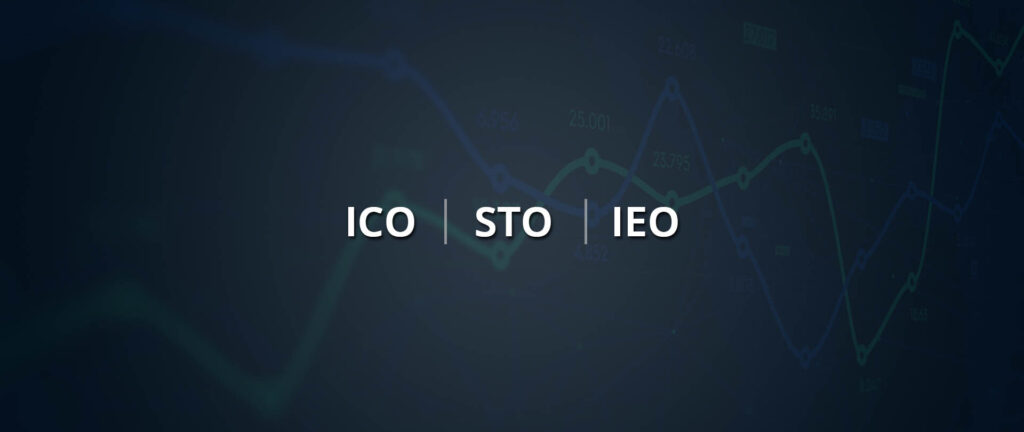Undoubtedly, the new sub-sectors of the cryptocurrency space, such as DeFi, NFTs, GameFi, SocialFi, and Web3, have brought significant capital into the space while accelerating blockchain adoption. But we are seeing a lack of unifying standards and interoperability among these amenities. At the beginning of 2022, Binance introduced the concept of Metaverse Finance to virtual power economies that can operate parallelly with the real world. Metafi brings the amalgamation of Metadata and Decentralized Finance and is said to be a game-changer for different services inside the blockchain to work harmoniously.
This article explains what metaverse finance is, how it works, and its potential use cases and limitations.
- What is MetaFi
- How Does Metaverse Finance Work?
- How is Metaverse Finance Structured?
- Why is Metaverse Finance Gaining Popularity?
- Implementation of MetaFi in Web3 World
- Is Metaverse Finance Fully Developed?
What is MetaFi?
MetaFi, or Metaverse Finance, combines two concepts—metadata and Decentralized Finance (DeFi). It is a term that describes the protocols, products, and services that make an intricate financial interplay between fungible and non-fungible tokens possible.
The cryptocurrency exchange Binance first introduced the concept of metaverse finance, calling it “a new paradigm shift that aims to standardize blockchain technology for traditional Web2 large-scale applications, including games, social media, and the metaverse.”
Metaverse finance is a concept that unites all blockchain-related projects (metaverse, GameFi, SocialFi, NFTs, Web3, etc.) by offering an advanced and complex DeFi infrastructure under one roof. Metaverse finance can use a combination of fungible and non-fungible currencies and community governance mechanisms like DAO (Decentralized Autonomous Organisation).
The objective behind developing the concept of metaverse finance is to make and develop a new ecosystem based on metadata and digital assets that will make possible mass adoption of web3 and use cases for consumers and participants. The simple aim of metaverse finance is to standardize large-scale blockchain applications and give way to unprecedented interoperability among different platforms.
The Breakdown
Metadata is the data that contains information on other data. This data helps identify the features and properties of the underlying information being described. One of the easiest examples of understanding metadata is the pictures on your phone. Every picture on your phone has metadata associated with it (such as resolution, date, location, etc.). Blockchain transactions also have metadata. An NFT’s metadata, for instance, can include its actual content and links to the related art.
DeFi, short for Decentralised Finance, is a collective term for financial products and services based on peer-to-peer payments through blockchain technology. Using blockchain, DeFi allows trustless banking and eliminates the need for traditional middlemen such as banks and/or brokers. The DeFi technology is powered by the same distributed ledgers that are used in dApps and cryptocurrencies. Almost all crypto applications have some DeFi elements to them.
How Does Metaverse Finance Work?
Metaverse Finance takes advantage of the fact that most blockchains have metadata about assets to facilitate interoperability. Metaverse finance aims to standardize metadata formats so that the assets are sortable, machine-readable, and usable on every blockchain.
MetaFi’s goal is to bring together a wide range of blockchain functions into a single Meta ecosystem, which (owing to metadata standards used across multiple platforms and blockchains) will be interoperable. If blockchains have a unified metadata standard, each blockchain will display its metadata similarly.
This can allow stability and interoperability in different blockchain projects, creating a parallel economy that brings hundreds of millions of users into the crypto ecosystem over the next ten years.
How is Metaverse Finance Structured?
Three important components make up the structure of Metaverse Finance:
Foundations of MetaFi
Foundations are the building blocks of any metaverse finance protocol, including the core frameworks, which would serve as layer zero, one, and two solutions. The core frameworks help in the development of applications through the use of shared application logic and security. Integrating this core layer is imperative for any application that wishes to provide an experience within the metaverse. Otherwise, the application will be isolated. Its economic and creative value will gradually stagnate, rendering the application incapable of being financially inclusive.
DeFi in MetaFi
Decentralized Finance (DeFi) is an emerging financial technology that uses secure distributed ledgers to eliminate intermediaries from financial transactions by allowing people, merchants, and businesses to transact directly with each other. DeFi enables anyone to use financial services anywhere, irrespective of who or where they are. The DeFi component in metaverse finance includes the small financial application available on the core frameworks. Often considered to be money legos, they work as unstoppable programs that use smart contracts to enable complex financial dynamics in metaverse finance.
Verses in MetaFi
A collection of domains or parallel verses which build the whole metaverse. The different virtual worlds remain connected with the foundational layers of verses as per their compatibility and cost-effective value transfer.
The foundations and DeFi are the horizontal components, while the verses are the vertical component of an open metaverse. Metaverse finance occurs in between the intersection of the vertical and horizontal components. Earlier, we said that metaverse finance could use both fungible and non-fungible currencies. The intersection of the vertical and horizontal components is where, for example, NFTs (non-fungible tokens) interact with finance (fungible tokens).
Why is Metaverse Finance Gaining Popularity?
Developing Financial Tooling: Up until now, the technical complexity of the DeFi stack has driven crypto developers away. The introduction of NFTs, however, is increasingly allowing creators and communities to set economic terms of creative exchange with users. Fans and communities can now directly share in the financial success of their favorite artists, products, and/or services.
All-encompassing Financialization: Metaverse Finance-related technologies bring better options to get the value and flow of digital artworks in open markets. These technologies can be leveraged to form a long tail of value where real-time price discovery paves the way for unlocking hidden value unrealized across the internet.
Risk Mutualisation: DeFi has successfully introduced the mutualization of risk in combination with DAOs. Unlike traditional institutions that often fail to assess risk in new and emerging markets, Decentralized finance provides users with the tools for community-based insurance provision.
Improved DAO Services Stack: A maturing DAO stack will enable collective governance of on-chain digital and financial service providers while giving the members the liberty to join and exit at their inclination on clearly understood terms.
Gamification of Finance: The development, adoption, and evolution of play-to-earn games draw Gen Z closer to the applications of metaverse finance.
Implementation of MetaFi in Web3 World
Once it fully matures, metaverse finance can significantly impact the potential of dApps. Let’s take a brief look at some of the possible applications:
Metaverse (The Virtual World)
A metaverse aims to be a 3-D digital space for work, social, and business opportunities where users can engage in different activities the same way as they would in the real world. The long-term goal of most metaverses is to create persistent shared features that allow users to consume diverse experiences together. Interoperability between different metaverses will be a major concern, much like DeFi in the early days, when lack of liquidity and trading volume caused fragmented DEXs to fail. Metaverse finance will lay down infrastructure with defined metadata standards that will enable different virtual worlds to interact with each other seamlessly. It may also help improve the functionality of digital assets and virtual tokens, taking their use well beyond their native platform.
Decentralized Marketplaces
Decentralized, blockchain-based NFT marketplaces are rapidly gaining popularity for their ability to provide different types of NFTs on a single platform. One of the prime functions of these marketplaces is to maintain a balance between supply and demand while enabling the discoverability, free trading, and direct issuing of NFTs. Here, NFTs are equivalent to financial assets. These marketplaces run on different blockchains and, at present, offer different types of NFTs (artwork, music, avatars, games items, virtual wearables, etc.) With metaverse finance, we may potentially be able to build marketplaces that can list every single asset type existing in various chains, resulting in a better user experience and bringing efficiency and convenience to the process of NFT trading.
NFT Yield Farming
Yield farming allows users to use their idle NFTs as collateral to take out crypto loans or rent them out for a profit. In fact, this has been a popular strategy among gamers who can’t afford valuable in-game NFT items. Metaverse finance will only increase the functionality of yield farming NFTs of different types across different platforms.
Fan Tokens
Fan tokens are fungible or non-fungible tokens typically minted by sports or fan clubs to give their holders some exclusive perks and privileges like VIP memberships, voting rights, access to special events, etc. Metaverse finance can help streamline the process of minting, buying, and selling fan tokens by setting standard metadata in place for different tokens and platforms.
Is Metaverse Finance Fully Developed?
The concept of combining DeFi and metaverse is still under development, and several challenges stare this union right in the face.
Hardware and Software Requirements: The next stage of the Internet requires an immersive 3D interface powered by VR, AR, and AI. In the present scenario, we are still a few years behind in building the infrastructure for that stage of the internet. The hardware and software requirements, such as the VR/AR capabilities, blockchain scalability, AI advancement, etc., will take some time before being ready for global mass adoption.
Lack of Interoperability: Ironic as it may be, the prime reason for which metaverse finance was introduced is itself one of the biggest challenges it faces. Interoperability, i.e., the ability of an app to see, access, and share information across different platforms and blockchain networks on foundation technologies like layer one blockchains, need to be improved to make applications running on blockchain protocols more accessible across the board. We can only hope for many interoperable projects with multi-chain functionality and bridges to facilitate easy asset and data transfers.
Legal and Governance Issues around Fractionalization: NFT token holders own multiple rights. If an NFT is divided into several parts and circulated to different people, it’s not always clear how those rights are managed. This area needs to be clear, transparent, and legitimate to protect all participants.
Unclear Tokenomics: As is evident from the rise and fall of different projects in the DeFi and GameFi sectors, long-term sustainable growth can only happen when tokenomics and holder incentives are properly aligned. Leaving this problem unsolved before the evolution of metaverse finance may cause price dumps to become more brutal.
Conclusion
The concept of metaverse finance combines the best of the metaverse and DeFi. It is an exciting new idea with virtually endless possibilities. If implemented successfully, it can bring different aspects of Web3 under one umbrella while bringing vast interoperability to the metaverse. Metaverse Finance can also facilitate mass adoption of metaverse and blockchain as it will aid users in exploring other DeFi spaces through interoperability. Whether in the metaverse, gaming, or other areas, the concept of standardized data by metaverse finance will lead to many applications and innovations in the crypto universe.


